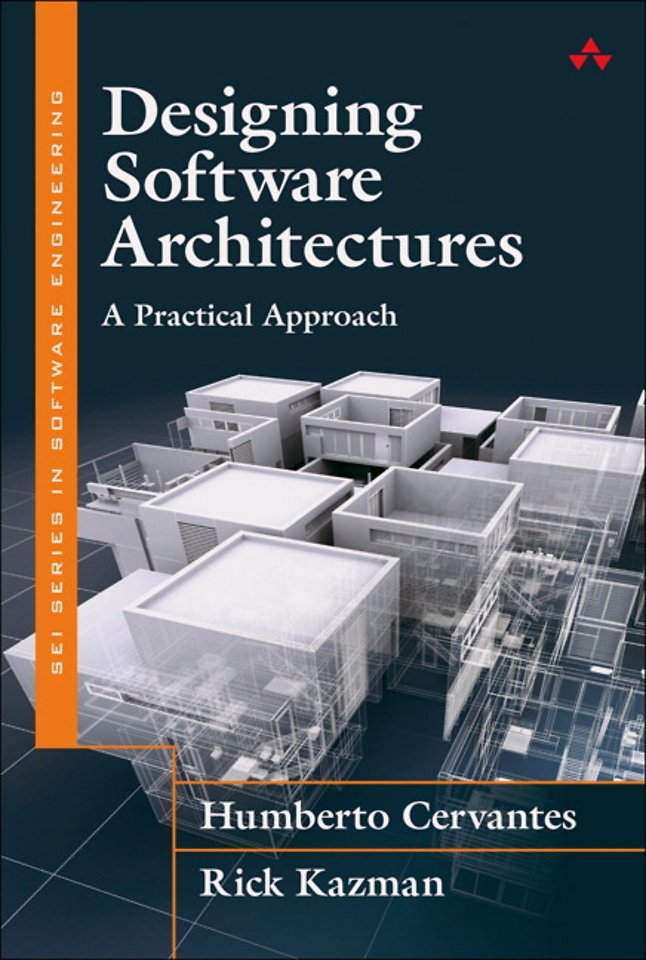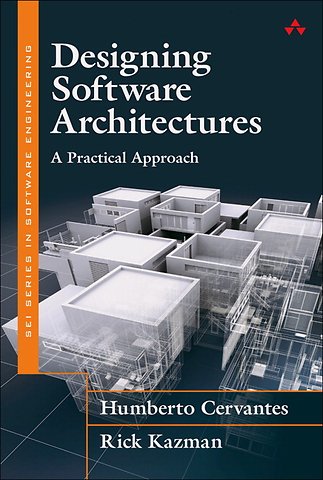Designing Software Architectures
A Practical Approach
E-book Epub met adobe beveiliging Engels 2016 1e druk 9780134390833Samenvatting
Designing Software Architectures will teach you how to design any software architecture in a systematic, predictable, repeatable, and cost-effective way.
This book introduces a practical methodology for architecture design that any professional software engineer can use, provides structured methods supported by reusable chunks of design knowledge, and includes rich case studies that demonstrate how to use the methods.
Using realistic examples, you’ll master the powerful new version of the proven Attribute-Driven Design (ADD) 3.0 method and will learn how to use it to address key drivers, including quality attributes, such as modifiability, usability, and availability, along with functional requirements and architectural concerns.
Drawing on their extensive experience, Humberto Cervantes and Rick Kazman guide you through crafting practical designs that support the full software life cycle, from requirements to maintenance and evolution. You’ll learn how to successfully integrate design in your organisational context, and how to design systems that will be built with agile methods.
Comprehensive coverage includes:
-Understanding what architecture design involves, and where it fits in the full software development life cycle
-Mastering core design concepts, principles, and processes
-Understanding how to perform the steps of the ADD method
-Scaling design and analysis up or down, including design for pre-sale processes or lightweight architecture reviews
-Recognising and optimising critical relationships between analysis and design
-Utilising proven, reusable design primitives and adapting them to specific problems and contexts
-Solving design problems in new domains, such as cloud, mobile, or big data
Specificaties
Lezersrecensies
Inhoudsopgave
Acknowledgments xvii
Chapter 1: Introduction 1
1.1 Motivations 1
1.2 Software Architecture 3
1.3 The Role of the Architect 7
1.4 A Brief History of ADD 8
1.5 Summary 9
1.6 Further Reading 10
Chapter 2: Architectural Design 11
2.1 Design in General 11
2.2 Design in Software Architecture 13
2.3 Why Is Architectural Design So Important? 16
2.4 Architectural Drivers 17
2.5 Design Concepts: The Building Blocks for Creating Structures 28
2.6 Architecture Design Decisions 38
2.7 Summary 40
2.8 Further Reading 41
Chapter 3: The Architecture Design Process 43
3.1 The Need for a Principled Method 43
3.2 Attribute-Driven Design 3.0 44
3.3 Following a Design Roadmap According to System Type 49
3.4 Identifying and Selecting Design Concepts 53
3.5 Producing Structures 58
3.6 Defining Interfaces 61
3.7 Creating Preliminary Documentation During Design 65
3.8 Tracking Design Progress 69
3.9 Summary 72
3.10 Further Reading 72
Chapter 4: Case Study: FCAPS System 75
4.1 Business Case 75
4.2 System Requirements 77
4.3 The Design Process 80
4.4 Summary 105
4.5 Further Reading 105
Chapter 5: Case Study: Big Data System 107
5.1 Business Case 107
5.2 System Requirements 108
5.3 The Design Process 111
5.4 Summary 143
5.5 Further Reading 144
Chapter 6: Case Study: Banking System 145
6.1 Business Case 145
6.2 Existing Architectural Documentation 149
6.3 The Design Process 151
6.4 Summary 158
6.5 Further Reading 159
Chapter 7: Other Design Methods 161
7.1 A General Model of Software Architecture Design 161
7.2 Architecture-Centric Design Method 164
7.3 Architecture Activities in the Rational Unified Process 165
7.4 The Process of Software Architecting 167
7.5 A Technique for Architecture and Design 169
7.6 Viewpoints and Perspectives Method 171
7.7 Summary 173
7.8 Further Reading 174
Chapter 8: Analysis in the Design Process 175
8.1 Analysis and Design 175
8.2 Why Analyze? 178
8.3 Analysis Techniques 179
8.4 Tactics-Based Analysis 180
8.5 Reflective Questions 186
8.6 Scenario-Based Design Reviews 187
8.7 Architecture Description Languages 190
8.8 Summary 191
8.9 Further Reading 192
Chapter 9: The Architecture Design Process in the Organization 193
9.1 Architecture Design and the Development Life Cycle 193
9.2 Organizational Aspects 202
9.3 Summary 204
9.4 Further Reading 204
Chapter 10: Final Words 207
10.1 On the Need for Methods 207
10.2 Next Steps 209
10.3 Further Reading 210
Appendix A: A Design Concepts Catalog 211
A.1 Reference Architectures 211
A.2 Deployment Patterns 221
A.3 Architectural Design Patterns 224
A.4 Tactics 230
A.5 Externally Developed Components 241
A.6 Summary 245
A.7 Further Reading 246
Appendix B: Tactics-Based Questionnaires 247
B.1 Using the Questionnaires 247
B.2 Availability 248
B.3 Interoperability 252
B.4 Modifiability 253
B.5 Performance 255
B.6 Security 257
B.7 Testability 260
B.8 Usability 261
B.9 DevOps 263
B.10 Further Reading 267
Glossary 269
About the Authors 275
Index 277
Anderen die dit e-book kochten, kochten ook
Rubrieken
- advisering
- algemeen management
- coaching en trainen
- communicatie en media
- economie
- financieel management
- inkoop en logistiek
- internet en social media
- it-management / ict
- juridisch
- leiderschap
- marketing
- mens en maatschappij
- non-profit
- ondernemen
- organisatiekunde
- personal finance
- personeelsmanagement
- persoonlijke effectiviteit
- projectmanagement
- psychologie
- reclame en verkoop
- strategisch management
- verandermanagement
- werk en loopbaan







